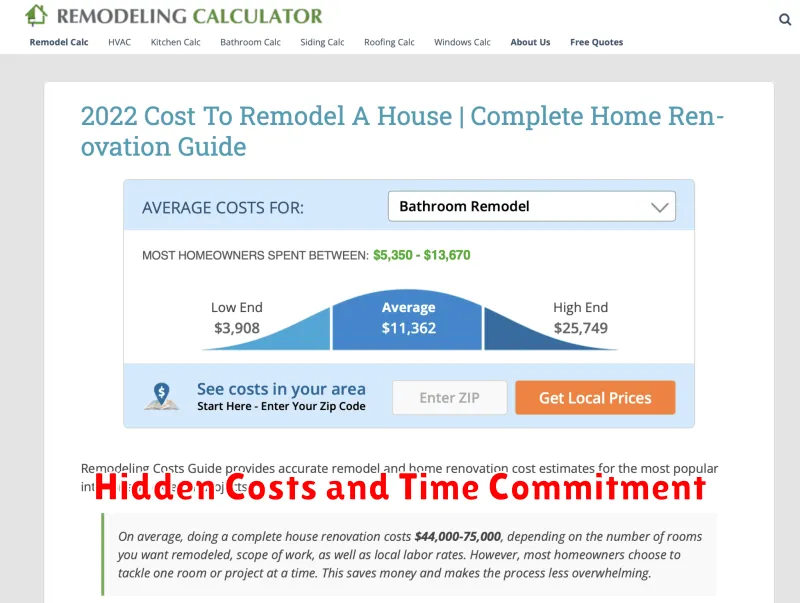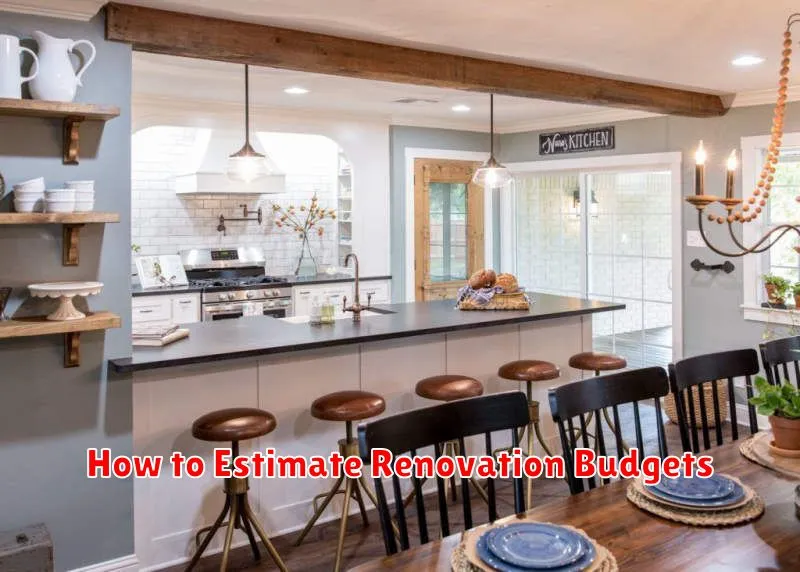Considering purchasing a fixer-upper home? The allure of a lower purchase price and the opportunity to personalize a space to your exact liking can be incredibly tempting. However, navigating the complexities of a fixer-upper requires careful consideration of the potential pros and cons. This article will delve into the advantages and disadvantages of buying a fixer-upper, providing you with the essential information you need to make an informed decision. From the potential for increased property value and design flexibility to the hidden costs and time commitment involved, we will explore the crucial aspects of fixer-upper homes to help you determine if this path is the right one for you.
Owning a home tailored precisely to your vision can be incredibly rewarding, but buying a fixer-upper is not without its challenges. Understanding the potential pitfalls, alongside the benefits, is key to avoiding costly surprises and ensuring a successful renovation. This article will examine the pros and cons of fixer-upper homes, providing a balanced perspective to empower you to make the best choice for your individual circumstances. We’ll cover everything from budgeting and renovation planning to the emotional toll a major project can take, offering a comprehensive guide to the fixer-upper experience.
What Is a Fixer-Upper?
A fixer-upper is a property, typically a house, that requires repairs, renovations, or updates. These properties are often sold at a lower price than comparable properties in good condition, reflecting the investment of time and money needed to bring them up to standard. The extent of work required can vary significantly, from cosmetic updates like painting and landscaping, to major structural repairs involving plumbing, electrical, or foundation work. Purchasing a fixer-upper can be an attractive option for buyers willing to put in the effort, potentially allowing them to customize a home to their preferences and build equity through improvements.
Key characteristics of a fixer-upper include visible signs of wear and tear, outdated features, and potentially neglected maintenance. Examples include peeling paint, worn flooring, outdated kitchens or bathrooms, and overgrown landscaping. While some fixer-uppers may only require cosmetic work, others may have more significant issues, such as roof damage, faulty wiring, or plumbing problems. It is crucial for potential buyers to thoroughly inspect the property and obtain professional assessments to accurately estimate the cost and scope of necessary repairs.
Deciding if a fixer-upper is right for you involves carefully weighing the potential benefits against the risks. Benefits can include a lower purchase price, the opportunity to customize the property, and the potential to increase its value. However, risks include unexpected repairs, cost overruns, and the time commitment required. It’s essential to have a realistic budget, a clear understanding of your DIY abilities, and a reliable team of contractors if needed.
Financial Advantages of Renovating
Renovating your home can offer significant financial benefits beyond simply improving its aesthetic appeal. A well-planned renovation can substantially increase your home’s value, allowing you to recoup the renovation costs and potentially gain additional equity. This is particularly true for updates that address outdated features or enhance functionality, such as kitchen and bathroom remodels, energy-efficient upgrades, or additions that expand living space. Furthermore, renovations can make a home more attractive to potential buyers, leading to a quicker sale and a more competitive selling price should you decide to put your property on the market.
Beyond increased resale value, renovations can also lead to long-term cost savings. Updating older appliances and systems with energy-efficient alternatives can significantly reduce monthly utility bills. Likewise, addressing structural issues or necessary repairs proactively can prevent more costly damage down the road. Investing in durable, high-quality materials during a renovation can also minimize the need for frequent repairs and replacements, saving money over time.
Finally, renovating can offer financial flexibility depending on your individual circumstances. For example, a renovation can be a less expensive alternative to purchasing a larger home, allowing you to customize your current space to better meet your needs. It’s also possible to finance renovations through various means, such as home equity loans or personal loans, providing access to the necessary funds while spreading the cost over time.
Hidden Costs and Time Commitment

When considering any new endeavor, it’s crucial to account for not only the upfront expenses but also the potential hidden costs. These can include unexpected maintenance fees, subscription renewals, or supplementary materials needed for successful completion. Failing to acknowledge these costs can lead to budget overruns and frustration.
In addition to financial costs, the time commitment associated with a new project is often underestimated. Accurately assessing the required time involves considering not just the core activity, but also associated tasks like planning, research, travel, and communication. A realistic time estimate is vital for effective scheduling and avoiding burnout.
By carefully evaluating both the hidden costs and time commitment involved, you can make more informed decisions and ensure that you’re prepared for the true investment required to achieve your goals.
How to Estimate Renovation Budgets

Accurately estimating renovation budgets requires careful planning and consideration of various factors. Begin by defining the scope of your project. List all the desired changes, from minor updates like painting to major structural alterations. This detailed scope will serve as the foundation for accurate cost estimations. Next, research material and labor costs. Obtain quotes from multiple suppliers for materials and consult with contractors to understand prevailing labor rates in your area. Don’t forget to account for permits and inspections, which can vary significantly based on location and project complexity. Adding a contingency buffer, typically 10-20% of the total estimated cost, is crucial to address unforeseen expenses and potential price fluctuations.
Breaking down the budget into specific categories can enhance accuracy and control. Consider creating separate budget lines for demolition, framing, electrical, plumbing, HVAC, drywall, flooring, cabinetry, appliances, and fixtures. This granular approach allows for better tracking of expenses and identification of potential cost overruns. Online resources and cost calculators can provide a general benchmark, but remember that actual costs can differ based on your specific project and location. Consulting with experienced professionals, such as architects or contractors, can offer invaluable insights and help refine your budget estimates.
Finally, regularly monitor and adjust your budget as the project progresses. Keep meticulous records of all expenses and compare them against your initial estimates. Be prepared to make adjustments if unforeseen issues arise or if material or labor costs change. Effective communication with contractors and suppliers is essential for managing expectations and ensuring the project stays within budget. By following these steps, you can develop a realistic renovation budget and minimize the risk of financial surprises during the project.
When to Say No to a Fixer-Upper

While fixer-uppers can be tempting due to lower listing prices, they’re not for everyone. Say no when your budget is tight. Renovations often go over budget, and unexpected issues can arise. If you only have enough for the purchase price and a small buffer, a fixer-upper could lead to financial strain. Also, consider your timeline. If you need to move in quickly, a fixer-upper might not be the best choice. Renovations can take months, even years, depending on the scope of the project and availability of contractors.
Another key factor is your skill level and available time. Are you comfortable managing contractors, making design decisions, and potentially doing some of the work yourself? If not, the stress and cost of hiring professionals for every aspect of the renovation can quickly negate any potential savings. Be realistic about how much time you can dedicate to the project. Renovations require significant oversight, and neglecting this can lead to costly mistakes and delays.
Finally, consider the location and condition of the property. A fixer-upper in a desirable neighborhood might be worth the investment, while one in a declining area might not appreciate in value even after renovations. Inspect the property carefully for major structural issues, like foundation problems or extensive water damage. These issues can be incredibly expensive to fix and could ultimately make the project financially unfeasible.
Permits and Legal Considerations
Before starting any construction or renovation project, it’s crucial to understand the necessary permits and legal requirements. Failing to obtain the correct permits can result in significant fines, project delays, and even forced demolition. Contact your local building department to determine the specific permits needed for your project. These may include building permits, electrical permits, plumbing permits, and zoning permits. The requirements vary depending on the scope of work and location.
Researching local zoning laws is also essential. Zoning regulations dictate how land can be used and what type of structures can be built. They cover aspects such as building height, setbacks, and permitted uses. Non-compliance with zoning regulations can lead to legal issues and project stoppage. Check with your local planning or zoning department to confirm your project complies with all applicable regulations.
Engaging a qualified contractor can be invaluable in navigating the permit and legal processes. Experienced contractors are familiar with local requirements and can often assist with permit applications and ensure compliance with regulations. They can also help identify potential issues early on, saving you time and money in the long run. Be sure to verify the contractor’s licensing and insurance before hiring them.
Tips for Working with Contractors
Clearly define the scope of work. Before starting any project, create a detailed contract that outlines all aspects of the job, including deliverables, timelines, payment schedules, and materials. This document protects both you and the contractor and helps prevent misunderstandings down the road. Be sure to include specific details about what the contractor is responsible for and what you expect as the client. A well-defined scope of work is crucial for a successful project.
Maintain open communication. Regular communication is essential throughout the project. Establish a preferred method of communication (e.g., email, phone calls, regular meetings) and stick to it. Address any concerns or questions promptly to avoid delays or costly mistakes. Don’t hesitate to ask for updates on the project’s progress and provide feedback as needed. Effective communication fosters a strong working relationship and ensures everyone is on the same page.
Manage payments effectively. Agree on a payment schedule upfront and document it in the contract. Never pay in full before the work is complete. Instead, consider making staged payments tied to specific milestones. This incentivizes the contractor to stay on schedule and deliver quality work. Always keep records of all payments made and ensure the contractor provides receipts or invoices. Proper payment management protects your investment and helps prevent financial disputes.

